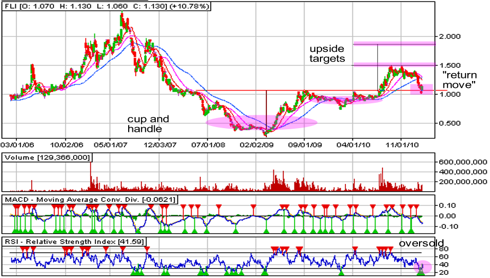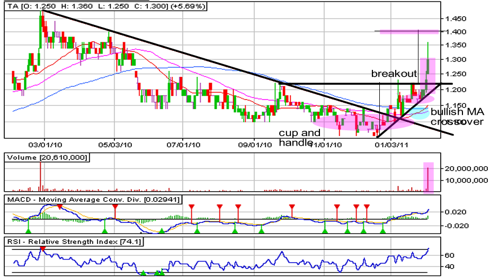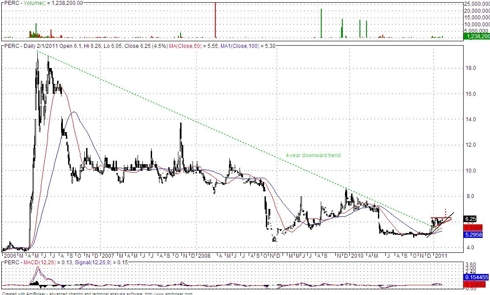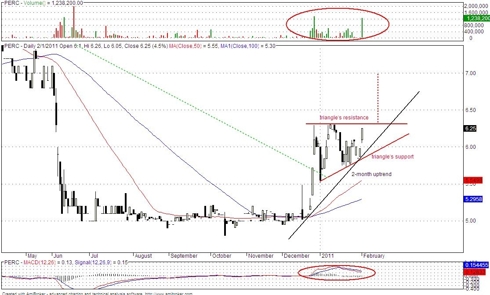By Sara Nunnally, Editor, Smart Investing Daily, taipanpublishinggroup.com
Today, I have to rant… Over the weekend I read parts of a report from the Financial Crisis Inquiry Commission. After the global financial crisis, the U.S. government created the Financial Crisis Inquiry Commission to delve into the heart of what caused the crisis, and who might be to blame for it.
On Thursday of last week, the Commission released its report. It’s 633 pages long, and cites some 700 interviews and millions of e-mails. No wonder it took them so long… Even the Warren Commission and its 888-page report took less than a year to prepare.
The Commission was created on May 20, 2009, under the Fraud Enforcement and Recovery Act of 2009.
Along with the report released on Thursday, the Financial Crisis Inquiry Commission released 1,200 documents, with another thousand documents and interviews to be released before the Commission dissolves on Feb. 13.
It does more than just point fingers… It explains how a financial system nearly collapsed. And it cited actions from people on both Wall Street and in Washington.
From page xv of the Financial Crisis Inquiry Commission Report:
Some on Wall Street and in Washington with a stake in the status quo may be tempted to wipe from memory the events of this crisis, or to suggest that no one could have foreseen or prevented them. This report endeavors to expose the facts, identify responsibility, unravel myths, and help us understand how the crisis could have been avoided. It is an attempt to record history, not to rewrite it, nor allow it to be rewritten.
Indeed, the Commission was to be bipartisan, but the report was supported only by the six Democrats on the panel. The four Republicans actually offered two separate dissents.
At the heart of the disagreement is an age-old argument.
Deregulation. For simplicity’s sake, let’s make some generalizations. Republicans favor an environment with less regulation, while Democrats tend to favor more regulation.
Republicans argue that regulations can unnecessarily slow economic growth.
Democrats say deregulation creates an unstable economy with room for fraud and bubbles.
For example, the Glass-Steagall Act was first passed in 1933. This act limited the amount of investing a commercial bank could do, and it in effect separated — and kept separate — investment banks and bank-holding companies from the commercial banking industry.
This act was in response to the vast speculation that was behind the stock market crash in 1929. There was outright fraud, and conflicts of interest that were behind some banks’ activities.
The Glass-Steagall Act sought to make commercial banks and brokers or investment banks two different entities.
But it wasn’t long before certain banks began chipping away at the act — lobbying for increases in investing limits and deregulation that would allow them to acquire other banks.
Citigroup was one of the more prominent folks behind the push to repeal the act. It’s been suggested that Sanford Weill, CEO of the group from October 1998 to October 2003, spent $100 million lobbying to get the act repealed.
It worked. On Nov. 12, 1999, the provisions in the Glass-Steagall Act that prohibit a bank-holding company from acquiring other financial companies were repealed with the Gramm-Leach-Bliley Act, also known as the Financial Services Modernization Act of 1999.
Many folks believe this repeal was responsible for the buildup of risky assets and investments and contributed heavily to the global financial crisis.
Consider what Robert B. Ekelund and Mark Thornton have to say:
The Financial Services Modernization Act of 1999 would make perfect sense in a world regulated by a gold standard, 100% reserve banking, and no FDIC deposit insurance; but in the world as it is, this “deregulation” amounts to corporate welfare for financial institutions and a moral hazard that will make taxpayers pay dearly.
And boy, have we… In fact, we still are, as the Federal Reserve continues to buy billions of dollars’ worth of government debt each month.
(Investing doesn’t have to be complicated. Sign up for Smart Investing Daily and let me and my fellow editor Jared Levy simplify the stock market for you with our easy-to-understand investment articles.)
But let’s get back to the Commission’s report.
In a nutshell, the Commission blames “the collapse of the housing bubble — fueled by low interest rates, easy and available credit, scant regulation, and toxic mortgages” for the financial crisis. But there are a lot of players that contributed to each of those factors, so the blame can be widely spread between Wall Street and Washington, and those places in between, like the Federal Reserve.
Speaking of which, did you know that Fed Chairman Ben Bernanke has called the financial crisis “the worst financial crisis in global history, including the Great Depression”?
Maybe not. He didn’t say it publicly; he told the Commission behind closed doors on Nov. 17, 2009.
And yet, everyone — from financial institutions to the Federal Reserve to the government and its regulators — didn’t see this coming.
Up until the you-know-what hit the fan, everyone was saying that the housing bubble could be contained. Greenspan didn’t see it, Bernanke didn’t see it… But maybe one company did.
Goldman Sachs.
This company, one of the creators of collateralized debt obligations (CDOs) that bundled up subprime mortgages and labeled them as a AAA-rated investment, was actually betting against these securities.
They made a killing, too. In 2007, the company made $4 billion in profits from their subprime bets.
That’s my rant… The report highlights all of these greedy actions of money-hungry banks and blind inactions from the government and Federal Reserve.
And much of it was already in Barbarians of Wealth, the book Sandy Franks and I co-authored last year:
Chapter 11: The Scourge of Wall Street talks about Goldman Sachs’ exploits. Chapter 6: Race to the Bottom Line talks about deregulation… It’s this kind of stuff that needs to be aired — not behind the closed doors of some government commission to be released more than a year later.
If you haven’t picked up a copy of Barbarians of Wealth yet, consider it a kind of New Year’s resolution. The barbaric tales of Wall Street are still relevant today. Perhaps even more so, as one commissioner, Byron S. Georgiou, said the financial system is not that different today as it was before the crisis.
“In fact,” he said, “the concentration of financial assets in the largest commercial and investment banks is really significantly higher today than it was in the run-up to the crisis, as a result of the evisceration of some of the institutions, and the consolidation and merger of others into larger institutions.”
The protections inside shouldn’t be missed…
Editor’s Note: Do you have the government form that could make you 81% in a day? Inside an obscure Canadian government form is a tip-off about a massive silver discovery. You could make 81% in a matter of hours when the discovery is announced to the public. This announcement could happen any day now. Find out how to cash in on this silver investment.
About the Author
Sara is Managing Editor of Smart Investing Daily. As Senior Research Director and global correspondent, Sara Nunnally’s diverse resume includes studies in art history, computer science and financial research. She has appeared on news media such as Forbes on Fox, Fox News Live, and CNBC’s Squawk Box, as well as numerous radio shows around the country.
As Senior Research Director, global correspondent and managing editor of Smart Investing Daily, Sara has traveled all over the world in search of the best investment opportunities to recommend to her readers, be they in developed economies like France and Italy, in emerging markets like the Czech Republic and Poland, or in frontier terrain like Vietnam and Morocco. Her unique “holistic” approach of boots-on-the-ground research has given her an edge in today’s financial marketplace as she searches for the next investment opportunities in hot sectors like alternative energy, currency markets and commodities.



